Optic Nerve Inflammation
About optic neuritis Optic nerve atrophy Nutrition Treatment
Optic nerve damage impacts vision at the most fundamental level causing severe vision loss. The optic nerve is like a cable of more than a million tiny electrical wires, or nerve fibers each carrying a part of the visual information to the visual cortex in the brain. If these nerve fibers become damaged, the brain doesn't get all the vision information and our sight becomes blurred.
Vitamins
& Supplements
Not sure which to get?For help call us at 845.475.4158
Complete Product List
Discount Packages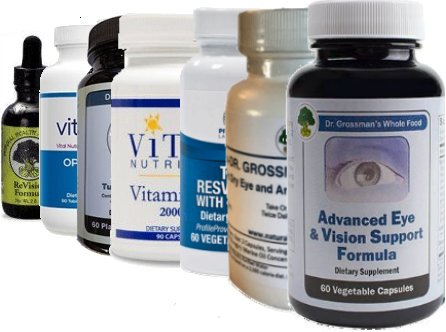 Optic Nerve Support and Anti-Inflammatory Package Optic Nerve Support and Anti-Inflammatory PackageNutrient combo to help nourish the optic nerve & reduce inflammation. 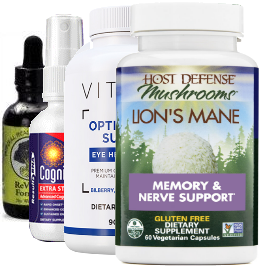 Optic Nerve Regen Package 1A Optic Nerve Regen Package 1ASupport package for optic nerve nourishment & regeneration support - 10% off retail  Optic Nerve Regen Package 2A with Stem Cell Support Optic Nerve Regen Package 2A with Stem Cell SupportSupport package for optic nerve nourishment & regeneration. 10% off retail. |
Essential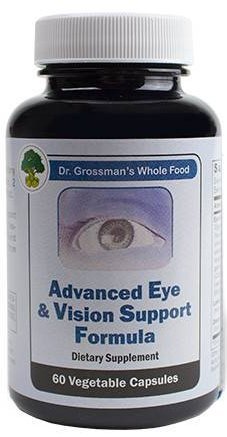 Advanced Eye & Vision Support Formula (whole food) 60 vcaps Advanced Eye & Vision Support Formula (whole food) 60 vcapsWhole food, wild crafted herbal vegetarian formula with vision antioxidants, chemical- and preservative-free. |
Essential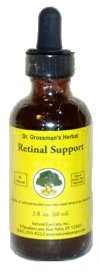 Retinal Support (wild-crafted herbal formula) 2 oz Retinal Support (wild-crafted herbal formula) 2 ozThis wild-crafted herbal formula by Dr. Grossman based on classic Chinese patent formulas to help support the retina and reduce general inflammation. |
Essential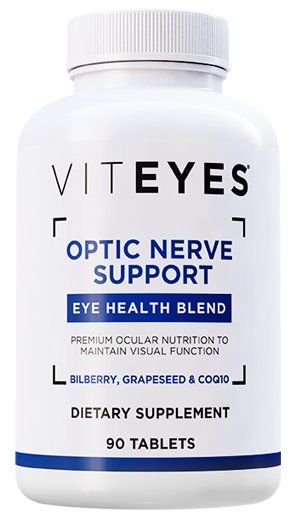 Viteyes Optic Nerve Support Formula - 90 tablets Viteyes Optic Nerve Support Formula - 90 tabletsSupports healthy optic nerve function |
Essential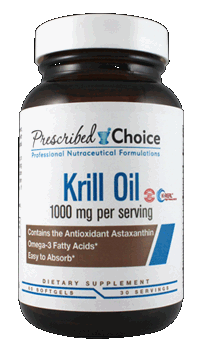 Krill Oil, 1000mg 60 softgels Krill Oil, 1000mg 60 softgelsHigh quality omega-3 fatty acid formula with astaxanthin. |
Essential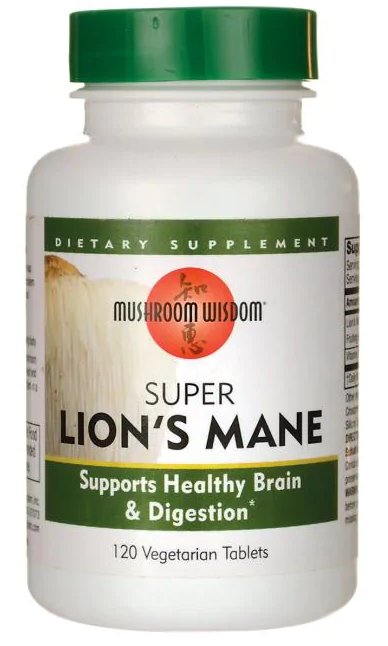 Super Lion's Mane 120 vegtabs Super Lion's Mane 120 vegtabsNeuroprotective and Possible Neuroregenerative |
| Very Important Serraflazyme AminoPro (Aminoguanidine) 75 mg 120 tablets Dr. Grossman's Omega-7 Chronic Dry Eye and Anti-Inflammatory Formula Dr. Grossman’s Bilberry/Ginkgo Combination 2oz (60ml) |
Conventional Treatment
One third of patients have a mildly swollen optic disc, and 95% of those cases resolve naturally. If diagnosed with neuromyelitis optica or neuroretinitis, a less favorable outcome, a high-dosed methylprednisolone (a corticosteroid) will be administered that can decrease swelling but does not reverse all damage. A swollen optic nerve usually improves over several days to weeks, but may take months for complete restoration of normal vision.
Because optic neuritis is often a first sign or precursor of MS, doctors can evaluate MS risk with an MRI scan of the brain. If MS is diagnosed, medications like beta-interferon or glatiramer acetate are prescribed. These drugs are intended to balance or influence anti-inflammatory and proinflammatory biochemicals in the brain and reduce inflammatory cell ability to cross the blood-brain barrier.
After the Optic Neuritis Treatment Trial in 1992, doctors determined that treatment with intravenous steroid drugs (not the oral steroids) reduces the risk of later developing MS - an important connection because about half of people who suffer an an initial episode of optic neuritis will develop MS. While this process has little effect on vision, it appears to be very important for health overall.
If you must take steroids, we suggest that you also take a good wholistic eye vitamin to help protect your vision. See more information about the effect of steroids on vision.
By using a special kind of MRI for the brain, doctors are now able to pinpoint exactly where the inflammation lesions are located - in the eye cavity, in the optic nerve canal, where the optic nerves cross each other, or further out toward the skull. This ability makes prognosis more accurate. Swelling and inflammation that is not located in or close to the cavity of the eye socket is less serious and more likely to result in recovery in a relatively short period of time.
Complementary Treatment
Free radical activity and oxidative stress are contributing factors to optic neurological conditions. Researchers report that although steroids are commonly used in treatment, reducing oxidative stress has proven effective in preclinical studies.
In addition, environmental factors such as smoking, excessive alcohol consumption, poor diet, medications, stress, and toxins may be linked to your risk of developing optic neuritis, as well as the recovery prognosis. Living a healthy lifestyle, therefore, is highly recommended for those with optic neuritis, or for those at risk for developing it. Eating a healthy diet, exercising regularly, and taking targeted antioxidants for eye health may slow down the progression of the disease and promote healthy vision.
In acute optic neuritis, the outer layer nerve synapses in the retina (known as the outer plexiform layer), as well as photoreceptors, can also become swollen. Therefore, the recommendations listed below include nutrients to support the health of the retina nerve cells, myelin sheath, and the photoreceptors, with the goal of limiting further damage to vision.
Nutritional Support
- Nutritional deficiencies. Because one type of optic neuritis - nutritional optic neuropathy - results from nutritional deficiencies, good nutrition is critical for healthy optic nerves. Nutritional optic neuropathy arises especially due to vitamin B12 and folic acid deficiencies. Certain nutrients such as lutein, vinpocetine, l-lysine, bilberry, alpha lipoic acid, magnesium and a number of other vitamins & enzymes and omega-3s support optic nerve health.
- Daily Juicing is a good way to maximize the nutritional value of your diet. For the optic nerve we especially recommend a combination of some of these: ginger, parsley, beets, cabbage, carrots, endive, chlorophyll, wheat grasses, berries (all organic preferably). See more on juicing.
- Antioxidants. There have been a number of studies indicating the oxidative stress is a factor in optic neuritis incidence and antioxidants may play an important role in treating the condition. For example, one study found that reducing oxidative stress on mitochondria in lab animals reduced myelin fiber injury by 51% and loss of retinal nerve ganglion cells four-fold.5 For example, in lab animal models, injections of lipoic acid were found to significantly improve both early and developed optic neuritis inflammation.4 Bilberry extracts also have good antioxidant properties.
- Blueberry. A condition known as juvenile idiopathic arthritis is one of the autoimmune conditions where optic neuritis may accompany the condition. Researchers found that adding blueberry juice to a drug, etanercept, produced better results in reducing inflammation than the drug alone.1
- Gypenosides. Researchers have determined that gypenosides, from a Chinese medicinal plant might help protect the optic nerve.3
- Other nutrients. Other nutrients such as aminoguarnadine, omega-3 fatty acids, amino acids such as taurine6, ginkgo biloba7, trans-resveratrol8, grapeseed extract, vitamins B12,9 C, and E may be helpful depending on the type of optic neuritis experienced.

Lifestyle
Because damage to the optic nerve can result from toxins and some medications, we recommend avoiding smoking which exposes the body and optic nerve to cyanide. In general consult carefully with your doctor about your medications and possible side-effects. This includes large-dose vitamin A, some heart medications, and some medications for malaria, diabetes, tuberculosis, some antibiotics, and oral contraceptives.
As with all other eye conditions, exercise is an important factor in your vision health protocol.
 Return to nutritional support
Return to nutritional support
Footnotes
1. Blueberry Improves the Therapeutic Effect of Etanercept on Patients with Juvenile
Idiopathic Arthritis, 2015.
2. Blood plasma levels of microelements in patients with history of optic neuritis, 2014
3. Gypenosides might have neuroprotective and immunomodulatory effects on optic neuritis, 2014
4. Lipoic acid decreases inflammation and confers neuroprotection in experimental autoimmune
optic neuritis, 2001
5. X. Qi, Suppression of mitochondrial oxidative stress provides long-term neuroprotection in experimental optic neuritis, Investitations in Ophthalmology and Visual Science, February, 2007.
6. Froger N, Cadetti L, Lorach H, Bemelmans, A.P., Degardin, D.E., et al. (2012). Taurine provides neuroprotection against retinal ganglion cell degeneration. PLoS One, 7(10):e42017.
7. Feng, X., Zhang, L., Zhu, H. (2009). Comparative anticancer and antioxidant activities of different ingredients of Ginkgo biloba extract (EGb 761). Planta Med. Jun;75(8):792-6.
8. Bastianetto, S., Menard, C., Quirion, R. (2015). Neuroprotective action of resveratrol. Biochem Biophys Acta, Jun;1852(6):1195-201.
9. Chavala, S.H., Kosmorsky, G.S., Lee, M.K., Lee, M.S. (2005). Optic neuropathy in vitamin B12 deficiency. Eur J Inter Med, Oct; 16(6):447-8.
Other Sources
Langer-Gould A, Brara SM, Beaber BE, Zhang JL (2014). The incidence of clinically isolated syndrome in a multi-ethnic cohort. J Neurol, Jul; 261(7):1349-55.
Memon, V., Saxena, R., Misra, R., Phuljhele, S. (2011). Management of optic neuritis. Indian J Ophthalmol, Mar-Apr; 59(2):117-122.
Dahl, A.A. Optic Neuritis. Retrieved Feb 25 2018 from https://www.medicinenet.com/ optic_neuritis/article.htm#optic_neuritis_facts
Ibid. Menon. (2011).
Rodriguez M, Siva A, Cross SA, O’Brien PC, Kurland LT. (1995). Optic neuritis: A population-based study in Olmsted County, Minnesota. Neurology, 45:244–50
Jin YP, de Pedro-Cuesta J, Söderström M, Stawiarz L, Link H. (1998). Incidence of optic neuritis in Stockholm, Sweden 1990-1995: I. Age, sex, birth and ethnic-group related patterns. J Neurol Sci, 159:107–14
MacDonald BK, Cockerell OC, Sander JW, Shorvon SD. (2000). The incidence and lifetime prevalence of neurological disorders in a prospective community-based study in the UK. Brain, 123:665–76
National Organization for Rare Disorders. Papillitis. Retrieved Feb 26 2018 from https://rarediseases.org/rare-diseases/papillitis/
Wilhelm, H., Schabet, M. (2015). The Diagnosis and Treatment of Optic Neuritis. Dtsch Arztebl Int, Sep; 112(37): 616–626
Kimura, A., Namekata, K., Guo, X., Noro, T., Harada, C. et al. (2017). Targeting Oxidative Stress for Treatment of Glaucoma and Optic Neuritis. Oxid Med Cell Longev, 2017:2817252
Al-Louzi, O.A., Bhargava, P, Newsome, S.D., Balcer, L.J., Frohman, E.M., et al. (2016). Outer retinal changes following acute optic neuritis. Mult Scler, Mar; 22(3):362-372.
About optic neuritis Optic nerve atrophy Nutrition Lifestyle
 info@naturaleyecare.com
info@naturaleyecare.com



 Home
Home


 Vision
Vision Vision
Vision



 Health
Health Health
Health Research/Services
Research/Services Pets
Pets About/Contact
About/Contact


